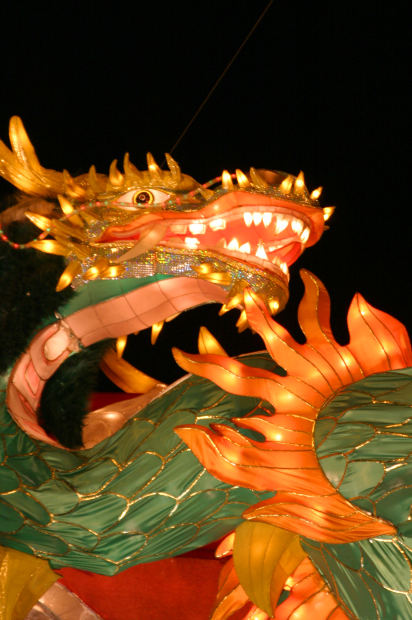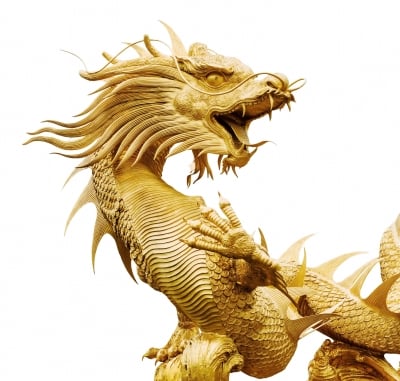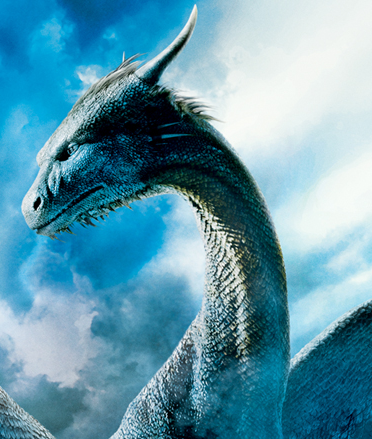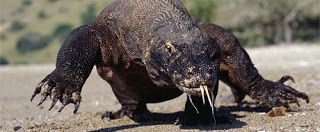- HubPages»
- Education and Science»
- Sociology & Anthropology»
- Folklore & Mythology»
- Legendary Creatures & Cryptids
Are Dragons Real?The Morphology Of Dragons
An image of a Chinese dragon

The Chinese dragon
The Chinese dragon is a legendary creature shrouded in mythology, its origins although unknown can be traced back to 300BC with the celebrated finding of dinosaur skeleton in china. The dragon became a symbol of the emperor of China during the Zhou dynastic being associated with power, strength, royalty, and nobility. Ancient China believed the dragon brought good luck, bountiful harvest, rain and prosperity.
Chinese dragon although similar to the European /western dragon favors a more serpentine shape, some with wings most without, long slender armored body covered in scales, frightful face with two very long whiskers, four legs with claws and the ability to fly with or without wings. It is also regarded as a source of potency, bravery and courage.
The dragon has been depicted to be multicolored and can be seen mostly in primary colors of red, orange, yellow and blue, large round eyes and huge sharp teeth gives the creature a very frightful look. The Chinese dragon has been represented in songs, Chinese art, folklore, national symbol, traditional dances and special holiday celebrations.
Shape of the Chinese dragon
1 serpentine shape
2 long thin body
3 frightful face
4 multicolored
5 four legs
6 very log whiskers
7 large round eyes
8 Clawed toes.
9 Armored body
10 Scales on body
The Morphology of Dragons
Dragons have captured are imagination through the ages and are considered creatures of great power and courage, but the mythical creatures origins is shrouded in mystery. How did the legendary serpent come about captivating us in films, musicals, cartoons, magazines, games and books, the question we must ask ourselves did dragons ever exist?
There are three theories about dragons the first is that they actually existed but became extinct like dinosaurs and other ancient creatures, the second theory is that mankind’s earlier encounter with large snakes like black mamba, anaconda and pythons my have fashioned elaborate tales of monster and huge serpents, while others believe the spiting cobra contributed to the fire breathing properties of dragons and the last but plausible idea is that early man encountered dinosaur skeleton and surmised that what the actually saw were dragons.
Dragon morphology
Dragons have different characteristics but are generally reptilian or serpentine in origin some are magical with mythic powers and have the ability to simply manifest (Fat Chance) while others hatch the way proper reptiles like crocodile, lizards and alligators procreate. The consensus is dragons generally have massive heads, long necks, four legs with clawed toes, some favor horns made out of ivory, have crests and fiery mane sometimes the ivory spike run down the replies spine and they have bat like wings and long powerful thick tails.
Dragons come in different dimensions and coloration from black to green and sometimes an elaborate mix of brilliant hues much like snakes, in European legend dragons are considered evil while Chinese dragons are considered benevolent while others depict them as wise, spiritual and magical.
According to films not all dragons have the ability to spit fire but the ones that can accomplish this task can spiting fire through their mouths, nose or both, a Hollywood film I like reign of fire depicts dragons as having only one Alfa male to thousands of female dragons. The dragons have excellent sight but poor vision just before nightfall feed on ashes and spit tons of fire.
Image of a golden dragon

Dragon blood
Dragon blood could refer to an ancient powdery pigment obtained from the slow growing dragon blood trees, dragon blood trees like the Sansre de Gardo, rattan palm and Dracaena Draco can be found in countries like china, Morocco, India, canary island and Amazon rain forest. The powder is extracted from the trunk of the tree as a bright red resin and is used in modern herbal practices for various conditions sometimes the powder is molded into a ball resin or a gel.
Ancient Romans, Arabs and Greeks believed in the ritual element and curative ingredient of the powder and used it in alchemy, ritual ceremonies and medicinal concoctions to cure diarrhea, dysentery, stomach upset, ulcers, skin disorders eczema and respiratory issues. The pigment can also be used for furniture, banners, painting decorative pieces, used as a dye or incense.
Dragon blood in films and mythology confers the slayer of a dragon who bathes in its blood impenetrable skin impervious to steel making the knight almost invincible
Which of this is not a chromatic Dragon
Type of food eaten by dragons
Dragon food
There is a little conflicting on what a dragon eats; they are believed to be carnivores so they consume flesh like lions, tigers, leopards or more appropriately crocodiles. So we can assume their diet consists of cattle, sheep, goats, cows and humans, a 1.5 ton dragon might need about 6000 calories per meal and could born close to 80,000 calories during flight.
The second reasoning is that dragons feed on ash from dry wood and their internal furnace converts the burnt wood in to energy, burning wood can actually produce tons of energy like that of charcoal powered trains.
Animals that eat wood are not as far fetched as you think; a species of catfish found in the Amazon forest eats wood shavings digesting the wood with the aid of protozoan in its digestive tract/ intestinal walls, converting the debris into sugar and energy. The ingestion of wood has some advantages like using the roughage's to dislodge worms and free bowel movement, may contain high sodium which is good for blood pressure and some creature even covert the tough cellulose into glucose.
Other kinds of diet consumed by dragons according to films, board games, video games and cartoon/comics are larger animals like camels, elephants, small lizards, aquatic animals and humans.
Saphira dragon image

Dragon’s habitat
Habitat
1 desert
2 dungeons
3 abandoned castles
4 caves
5 mountains
6 within huge forests
7 hilly plains
8 boggy swamp
9 molten rock
10 scrub
Chromatic Dragons
In Dungeons and Dragons you find a lot of chromatic dragons categorized by their color like the white dragon, black dragon, orange dragon, blue dragon, green dragon, purple dragon, yellow dragon and red dragon, each dwell in different habitats, eat different diets and have different characteristics and abilities.
The dragons in this classification usually have lawful evil intent, chaotic evil or just naturally evil, not all dragons are said to be evil especially in children’s cartoons some are friendly, intelligent and benevolent.
Dragon Habitat
Habitat
Dragon habitat vary according to its preference and physiology, they can be viewed as large reptiles and according to Dungeons and Dragons are selective of where they live most times in seclusion or in hiding from humans. The different habitats include sandy desert, thick forests, mountains, hills, hilly plain, caves arctic mountains, dungeons, molten rock, scrubs and abandoned castles.
A big komodo dragon

Which is not an attribute of dragons?
1 intelligence
2 cruelty
3 magic
4 hate
What do they eat?
Dragons feed on
1 humans
2 fish
3 aquatic critters
4 snakes
5 wood as ash
6 animals
How do dragons fly?
Dragons fly?
Not all dragons are believed to have the ability of flight, those that can fly would require an immense amount of energy and muscle power before they can get airborne, they at best would be clumsy before take off depending on wingspan and structure and may manage only moderate flexibility.
Some dragons a depicted to manage flight despite not having any wings, they take to the air magically (me smiling) or materialize like teleportation to wherever they want, dragons wings are sometimes made to look like those of bats.
Dragon Weaponry
Dragons are fierce killing machines loaded with an array of sophisticated weaponry that can be deployed either in self-defense, hunting or cruel evil, the sheer size and mass gives it a powerful muscle structure which includes the thick armored tail that sometimes ends in large boney spares. The mouth usually has over a hundred jagged teeth like the giant python, the teeth are used to tear into prey or to inflict severe damage in combat; some dragons have big frightful horns, large forearms with clawed toes.
Apart from the physical attributes some can spit fire other use frost, caustic ooze that burns flesh into ash in the case of the purple chromatic dragon generate searing energy, deploy deadly blade of pure energy and blinding bursts of light. Other weapons used by dragons apart from the arm plated skin are magic, enchantment, chaos and fear.
Komodo dragon
The Komodo dragon is the only animal apart from the dragon fly that bears the same name with the mythical creature. The Komodo dragon is an almost extinct large lizard that is found no other place in the world except the Komodo Island making the species of monitor lizard very rare. Komodo island can be found in the republic of Indonesia which makes up a collection of islands numbering 17, 508 individual islands such as Padar and Rica.
The large carnivorous reptile measures 9.5 ft long and could weigh upwards of 130 kg, they lay about 25 eggs each topping the scale at 210g that incubate for a period of eight months. The animal’s mouth is full of a toxic blend of bacteria and other obnoxious chemicals that acts like venom a single bite from the beast could cause a prey go into paralyzed toxic immobility.
Only ancient civilizations may know if the dragon ever existed but if they have to conform to science then all that magic and mysticism associated with dragons is purely mans fertile imagination, the great beasts where even give the ability to converse in multiple languages, have high intelligence and courage. If dragons exist today then mankind would have a very formidable adversary in the magnificent dragon.








